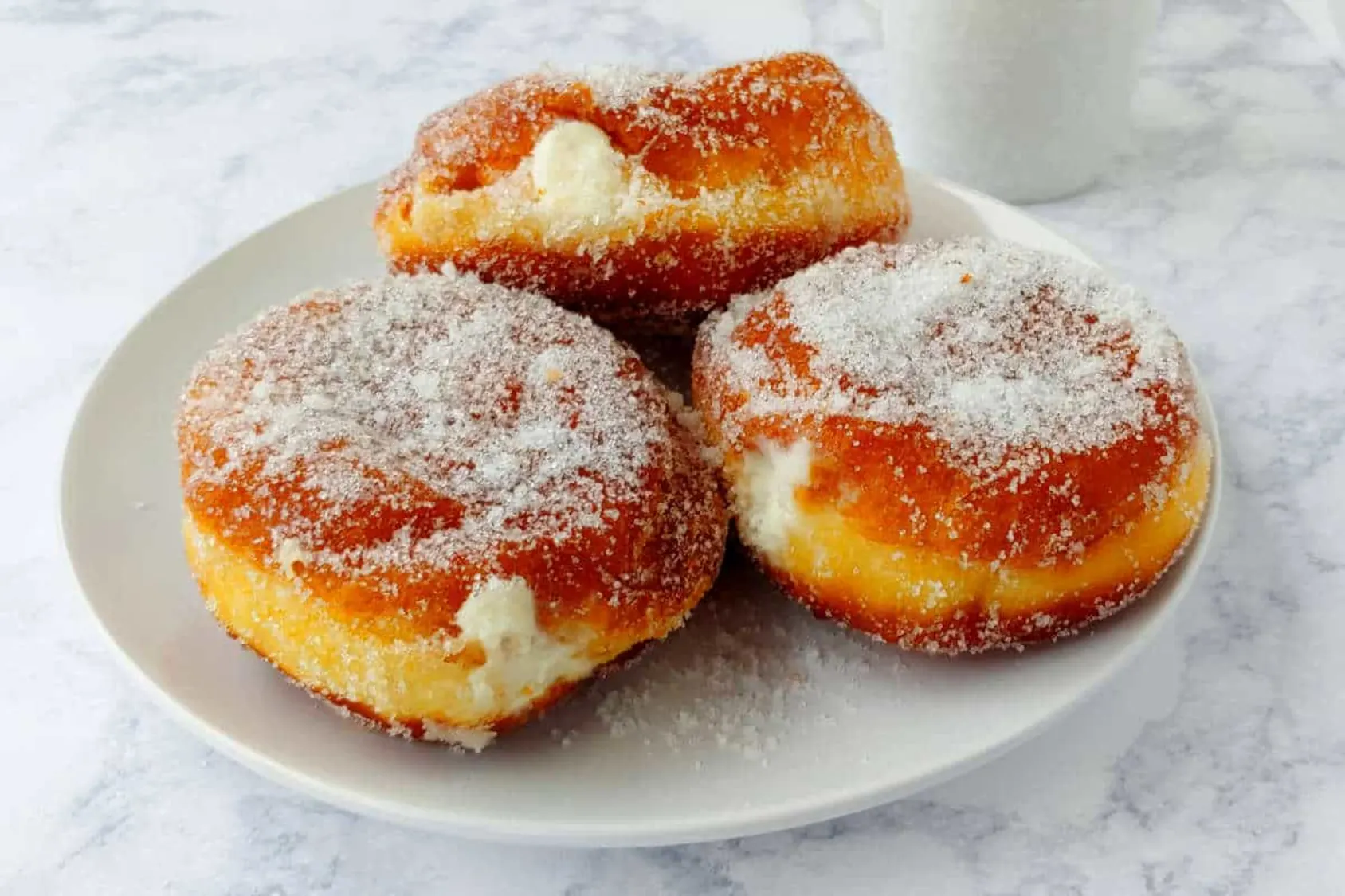
Pączki
Traditional Polish doughnuts filled with sweet preserves or custard.
Ingredients
- •Flour
- •Eggs
- •Milk
- •Yeast
- •Sugar
- •Butter
- •Jam
Instructions
Make Dough
Prepare yeast dough and let rise
Shape & Fill
Form doughnuts and add filling
Fry
Deep fry until golden brown
Pączki (pronounced "POHNCH-kee") are traditional Polish doughnuts that hold a special place in Polish cuisine and culture. Unlike regular doughnuts, these rich, sweet treats are made with a unique dough containing eggs, fats, sugar, yeast, and milk, then filled with sweet surprises like rose hip jam, plum preserves, or custard cream. Their distinctive characteristic is a slightly flattened spherical shape with a pale ring around the middle.
These beloved pastries have been part of Polish culinary tradition since the Middle Ages. During that time, families would make pączki to use up all their lard, eggs, and fruit preserves before the start of Lent. This tradition continues today with "Tłusty Czwartek" (Fat Thursday), when Poles consume millions of pączki nationwide. In fact, many Polish families still guard their pączki recipes as precious heirlooms passed down through generations.
Making authentic pączki requires patience and skill. The dough needs to be rich and light, achieved through careful kneading and proper proofing. The key to perfect pączki lies in the frying temperature - too hot, and they'll brown too quickly without cooking inside; too cool, and they'll absorb too much oil. Traditional recipes call for adding a splash of grain alcohol to the dough, which helps prevent the absorption of excess oil during frying.
While rose hip jam (róża) is the most traditional filling, modern variations include strawberry, raspberry, or plum preserves, custard cream, and even chocolate or advocaat (egg liqueur). The finishing touch is usually a dusting of powdered sugar, though some versions feature a thin glaze or candied orange peel. Some innovative bakeries now offer contemporary flavors like salted caramel or Nutella, though purists might argue these aren't authentic pączki.
In Poland, pączki are more than just a sweet treat - they're a social experience. On Fat Thursday, people queue at bakeries before dawn to secure their fresh pączki. They're shared in offices, homes, and as gifts to friends and family. While they're available year-round in Polish bakeries, they're particularly special during the carnival season leading up to Lent.
From a nutritional perspective, pączki are definitely an indulgence. Each one typically contains between 250-300 calories, with significant amounts of fat and sugar. They're not suitable for those with gluten allergies or egg sensitivities. However, as with many traditional treats, they're meant to be enjoyed in moderation, particularly during celebrations. Some modern bakeries offer baked versions or ones made with alternative sweeteners, though traditionalists maintain that a true pączek must be fried to achieve its characteristic texture and taste.
